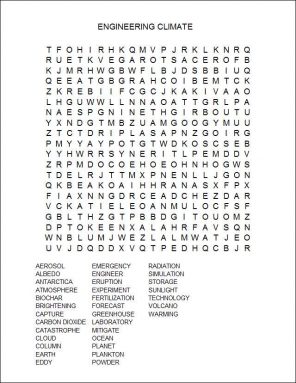Hacking the planet
Scientists reluctantly consider altering our planet’s climate to head off catastrophe
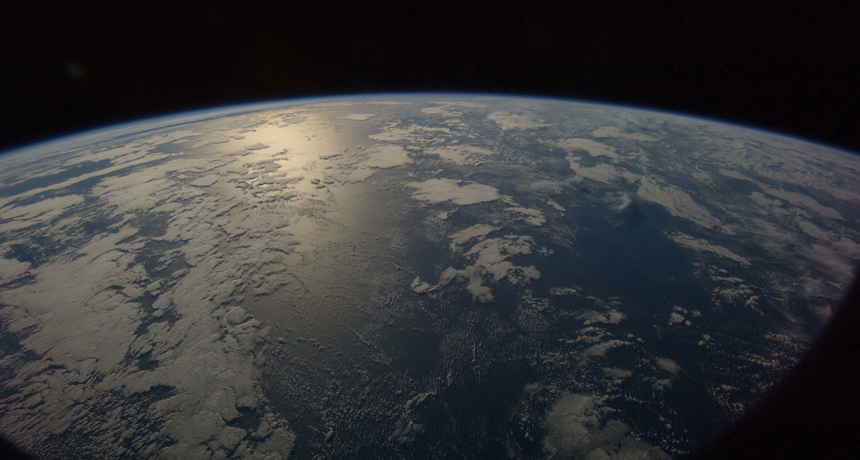
Earth, seen in this photo taken by an orbiting astronaut, is warming. To stave off the catastrophic effects of that warming, some experts are studying how to hack Earth’s climate. The proposals include blocking more of the sun’s rays from reaching Earth and removing carbon dioxide from our planet’s atmosphere.
NASA
Some problems have easy solutions. If we feel sweaty, we’ll head for the shade. If our soup’s too hot, we’ll blow on it. If a room’s too stuffy, we’ll open a window. But what are the options when the planet grows too warm?
That is the problem — and an enormous one — that Earth and its dwellers now face. In recent decades, the planet has begun developing a fever. It’s caused by carbon dioxide and other greenhouse gases polluting the atmosphere. The safest treatment should be to stop polluting, except that people show no signs of cutting back substantially on burning the fossil fuels that release this pollution. So some scientists have begun seriously considering a backup plan.
It involves hacking the Earth.
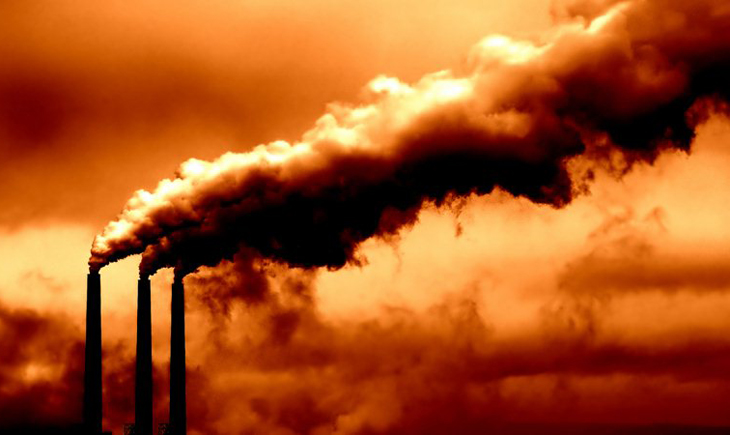
These researchers propose tinkering with the planet’s climate in several big ways. Adopting any of their proposed projects would be a step so major that many of those same experts hope people will never do it. But if successful, this geoengineering could soften — if not reverse — global warming. The risk: If unsuccessful, geoengineering might make things worse.
Geoengineering projects represent examples of thinking big. They propose altering natural processes at work in some of Earth’s most extreme but pivotal environments, from the deepest ocean to the upper atmosphere. Some projects propose changing the atmosphere by removing pollution. Others involve reflecting more sunlight into space.
These planet-scale projects all address the same great challenge: countering the impacts of burning large amounts of coal, oil and other fossil fuels. Since around 1750, humanity’s heavy and growing use of these fuels has spewed massive amounts of carbon dioxide, methane and soot into the air. These have dramatically altered Earth’s climate. Scientists now want to know whether people can safely change it back.
Our global ‘greenhouse’
Global warming is real. It’s due in part to a buildup in the atmosphere of carbon dioxide, or CO2. You can’t see, taste or smell this gas. All animals exhale it as they breathe. Plants take in CO2, using its carbon to produce new tissues. This gas is essential to most life on Earth. A problem develops only when there is far more in the air and water than plants can use or store. And a global reliance on the burning of fossil fuels is behind such an excess.

Just like the glass in a plant greenhouse, carbon dioxide in the air lets light pass through. But once it hits something, like the ground, buildings, plants or water, much of that light becomes converted to heat. And while CO2 lets light reflect back into space from Earth’s surface, it absorbs heat. This contributes to a warming of Earth’s atmosphere.
Our atmosphere currently holds record-high levels of carbon dioxide — more than at any other time during the past 3 million years. And this excess has been trapping more and more heat near Earth’s surface. The result: The land and oceans have been slowly but steadily warming. Sea levels across much of the planet also have been climbing, in some cases swamping coastlands or burying islands. And glaciers have been melting, losing their stores of freshwater — moisture that downstream communities rely on for drinking and watering crops.
Simply put: Earth is out of balance.
If nothing changes, global temperatures will continue to climb. This could make life harder for most living things, unless they can quickly adapt to a warm new world. Most scientists suspect they cannot adapt quickly enough. That worry has prompted the consideration of new ways to cool the planet.
The most straightforward way would be for people to burn less fossil fuel. However, the biggest users of coal, oil and natural gas show no signs of cutting back. These fuels now power most cars, light most homes and run the biggest factories. Over the past 250 years, airborne carbon dioxide levels have climbed by 40 percent. That increase is so large, some scientists argue, that people have already geoengineered Earth’s climate. But in a harmful way.
People don’t want to give up the conveniences that fossil fuels now power. Many people don’t even believe that their actions are responsible for global warming. And governments have been slow to enact laws to limit releases of greenhouse gases.
For all of these reasons, scientists are now starting to explore extreme geoengineering measures. But they are also approaching these backup plans with great caution and some reluctance.
“The thing is, everybody hates it — and so do I,” says Victor Smetacek of geoengineering. “We’d rather not do it,” says this scientist at the Alfred Wegener Institute in Bremerhaven, Germany. “But if you look at what’s happening today with carbon dioxide building up in the atmosphere, we have to do something.”
Hide the carbon
Geoengineering projects focus on two approaches: removing carbon dioxide from the atmosphere, or blocking some sunlight from reaching Earth’s surface. Measuring how well either approach succeeds would be hard. Critics also warn that a geoengineering mistake could create new problems. So the stakes are high. No scientist wants to launch a full-scale project without knowing more about potential costs and side effects.
In a search for answers, engineers have begun small experiments.
Some experts are testing how well devices can capture the carbon dioxide normally released by electric-power plants. Others are building fake trees; a substance coating the devices’ fake leaves draws carbon dioxide out of the air. Scientists are also exploring the idea of burying the charred remains of burned plants, called biochar. Burying biochar stores its carbon underground rather than letting it enter the air as carbon dioxide. Biochar also enriches the soil, providing a nutrient to aid plant growth.
Carbon dioxide might even be converted into a liquid that companies could inject and store away deep below the Earth’s surface. In June 2013, a U.S. Geological Survey report estimated that the United States could store nearly a century’s worth of carbon dioxide emissions in this way.
None of these options would be easy, at least if done on a scale to make much of a difference. Nor is their success guaranteed, says Smetacek. But, he adds: “We don’t have many options.”
One approach that he has been investigating would bury carbon under the sea. But not directly. His goal is to leave that job to microbes in the ocean. To encourage their help, he and other researchers have been feeding some of the microbes iron as a fertilizer.
Smetacek first started testing the idea in February 2004. The oceanographer boarded an icebreaker headed for the Southern Ocean, near Antarctica. There, he and his crew dissolved iron in seawater. They released the solution over an area roughly 65 square kilometers (25 square miles) in size. That’s roughly comparable to the New York City borough of Manhattan.
The experts weren’t littering. They wanted tiny organisms called phytoplankton (FY toh plank ton) to pull carbon dioxide from the air.
The idea goes like this: Iron occurs naturally in the sea. Phytoplankton absorb it to boost their growth. If enough iron is available, these floating organisms will begin an eating frenzy.
Burial at sea
Smetacek’s team hoped that adding extra iron would boost the growth of phytoplankton colonies. Along the way, these organisms would absorb carbon dioxide in the water. Later, when the phytoplankton grew old and died, their tissues would sink and become buried on the ocean floor. And they’d take their carbon to the grave with them.
The ocean naturally absorbs carbon dioxide from the air. If ocean levels of the gas fall, the water will pull in more from the air. And this explains why adding iron to boost phytoplankton could reduce levels of this gas in the air.
Oceanographer John Martin first proposed iron fertilization in the late 1980s. Since then, laboratory experiments have suggested that populations of sea organisms skyrocket when supplied bonus iron.
Open ocean tests pointed to the same conclusion. Smetacek designed sea studies to assess how long those fertilized organisms would hold onto the extra carbon. He chose a large eddy for his test site. An eddy is a large, cylindrical column of water. It rotates in a circle and extends from the surface to the ocean floor. Iron added to an eddy stays in the eddy.
“An eddy is like a giant test tube in the middle of the ocean,” Smetacek explains. “If you fertilize a patch, it doesn’t get lost.”
The added iron greatly boosted the number of phytoplankton in the eddy. The scientists monitored this increase for five weeks. In 2012, Smetacek’s team published its findings in the scientific journal Nature. They found that as phytoplankton died, they sank at least 1,000 meters (3,280 feet) — and probably all the way to the ocean bottom. Smetacek and his crew will report soon on follow-up tests. These were conducted after adding iron to another part of the ocean.
It would cost less to just test these concepts in a lab somewhere. However, the open ocean is a more complex system. So, Smetacek argues, “Iron fertilization experiments carried out in the open ocean are the best way to find out how the ocean functions.”
Cooling with clouds
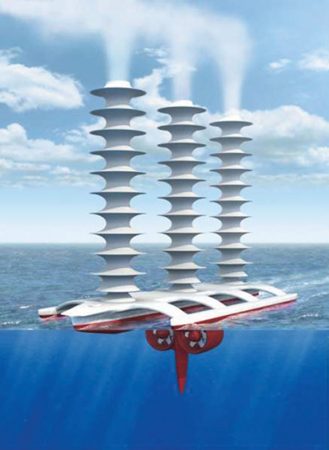
Earth naturally reflects some of the sun’s warming energy back into space. Clouds play a big role. Scientists talk about a cloud’s albedo, a measure of how much light a cloud reflects. For example, a thick cloud, low in the sky, reflects a lot of sunlight. That means it has a high albedo. High and thin clouds let most sunlight pass through and have a low albedo.
Because clouds play an important role in many climate processes, geoengineering with them is complicated.
Scientists often use computers to predict how climate will vary if certain conditions were to change. These computer programs are referred to as models. And different models can offer different predictions of how cloud cover will respond to climate changes, even without geoengineering.
“Clouds are a major uncertainty in greenhouse warming. Some models suggest they’ll increase [in number] and reflect more sunlight — and mitigate the CO2 effect,” says Rob Wood. He’s an atmospheric scientist at the University of Washington in Seattle. Other models, he notes, “say the clouds are going to reduce in quantity by a few percent, enough to let more sunlight in and enhance the greenhouse effect.”
Scientists know clouds reflect some sunlight back into space, which is why they are studying the possibility of “cloud brightening.” Their idea: Inject salt particles from the sea high into the sky over the oceans. There, the particles would spur the formation of new clouds or increase the albedo of existing clouds.
In August 2012, Wood and his collaborators proposed an experiment to perform this cloud brightening. They even described the ship that might be used to make the injected saltwater spray. Such a ship would be fitted with tall cylinders that resembled smokestacks. The cylinders would spray jets of the water droplets high above the oceans to build bright clouds.
Up in the air
Cloud-brightening tests might help scientists better understand clouds, Wood says. Still, he doesn’t think cloud brightening would save the planet. It simply wouldn’t make enough of a difference. He’s exploring a related idea — one that he says appears more promising. It would inject tiny sulfur particles far higher still into Earth’s atmosphere.
Nature already does that, on occasion. Whenever a powerful volcano erupts, it sends a jet of sulfur particles into the atmosphere’s upper reaches. Called aerosols, these particles reflect sunlight and cool the planet.
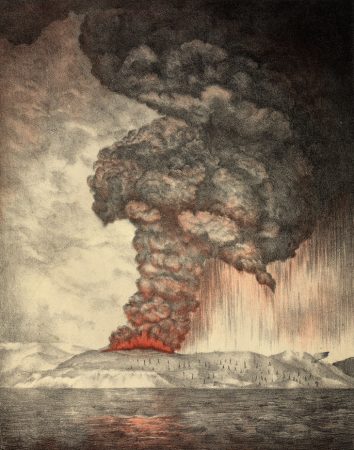
Jay Apt, a physicist at Carnegie Mellon, has been studying what this might cost. Technology exists to inject the aerosols, he and his collaborators reported last year in the scientific journal Environmental Research. They assessed the price tag of using existing aircraft, which would deposit particles at their flying altitudes. Then they considered using future, costlier aircraft to fly even higher. They even considered high-powered rockets that could deliver the particles into the loftiest parts of Earth’s atmosphere. Finally, they estimated the cost of building tall pipes, supported on floating platforms in the sea, to regularly pump aerosols high into the sky.
When a powerful volcano erupts, it may send a few million tons of sulfur aerosols to the stratosphere. (The stratosphere is a layer of the atmosphere that reaches from 10 kilometers (6 miles) up to 50 kilometers above Earth’s surface.) Using planes or other technologies to do the same thing could cost up to $8 billion a year, the scientists estimate. The sunlight-reflecting aerosols would keep global temperatures from rising, at least temporarily, Apt’s team concluded.
Because the aerosols would one day all fall back to Earth, the sky would need a regular supply of more.
Apt cautions that nobody wants to pump aerosols into the stratosphere.
“It’s a terrible idea,” Apt says, and should only be used to slow down global warming until a more permanent solution is found. Moreover, this costly remedy would do nothing to reverse the problem of too much carbon dioxide pollution.
An uncertain future
Managing how much solar radiation streams through Earth’s atmosphere might offer fast, short-term relief from global warming. However, this and every other geoengineering proposal could backfire. And perhaps in some unexpected way. For example, scientists don’t know the consequences of putting aerosols into the upper atmosphere. After all, aerosols are a type of pollution. Researchers don’t yet know if the particles would affect weather (like rainfall) or how living things grow.
It’s still too soon to take on any big geoengineering projects, argues Smetacek. There’s just too much uncertainty. “We need to do more experiments, many more, before we start working on the large scale.”
Meanwhile, global warming is a problem that’s not going away. Indeed, the problem risks getting far worse with time, says Wood, the atmospheric scientist. Something has to change. He hopes more young scientists take an interest in better understanding Earth’s climate. He also hopes up-and-coming experts might study ways to avoid the catastrophic effects predicted to occur with climate change.
“I think a lot of us would like to believe that we won’t have to do anything because humankind will come to their senses at some point and realize this is going to be a big problem,” says Wood. However, he adds, “It’s amazing what we don’t know.”
POWER WORDS
aerosol A suspension of tiny solid or liquid particles in a gas.
atmospheric science The study of natural systems and cycles in the atmosphere.
biochar Charcoal produced by heating plant material in a no- or low-oxygen environment. This material is then added to amend the fertility of soil.
carbon dioxide A colorless, odorless gas. Burning fossil fuels such as coal, oil or natural gas produces large amounts of carbon dioxide, or CO2. The gas traps heat in Earth’s atmosphere.
climate The generally prevailing weather conditions in a particular area or the typical weather conditions throughout some long period.
climate change Long-term, significant change in Earth’s climate. It can happen naturally or in response to human activities, including the burning of fossil fuels.
geoengineering Large-scale engineering projects designed to change the climate of Earth. (The prefix geo- comes from the Greek word for Earth.)
stratosphere The layer of Earth’s atmosphere that reaches from about 10 kilometers (6.6 miles) to about 50 kilometers (about 31 miles) above Earth’s surface.
Word Find
(click here to enlarge puzzle for printing)
